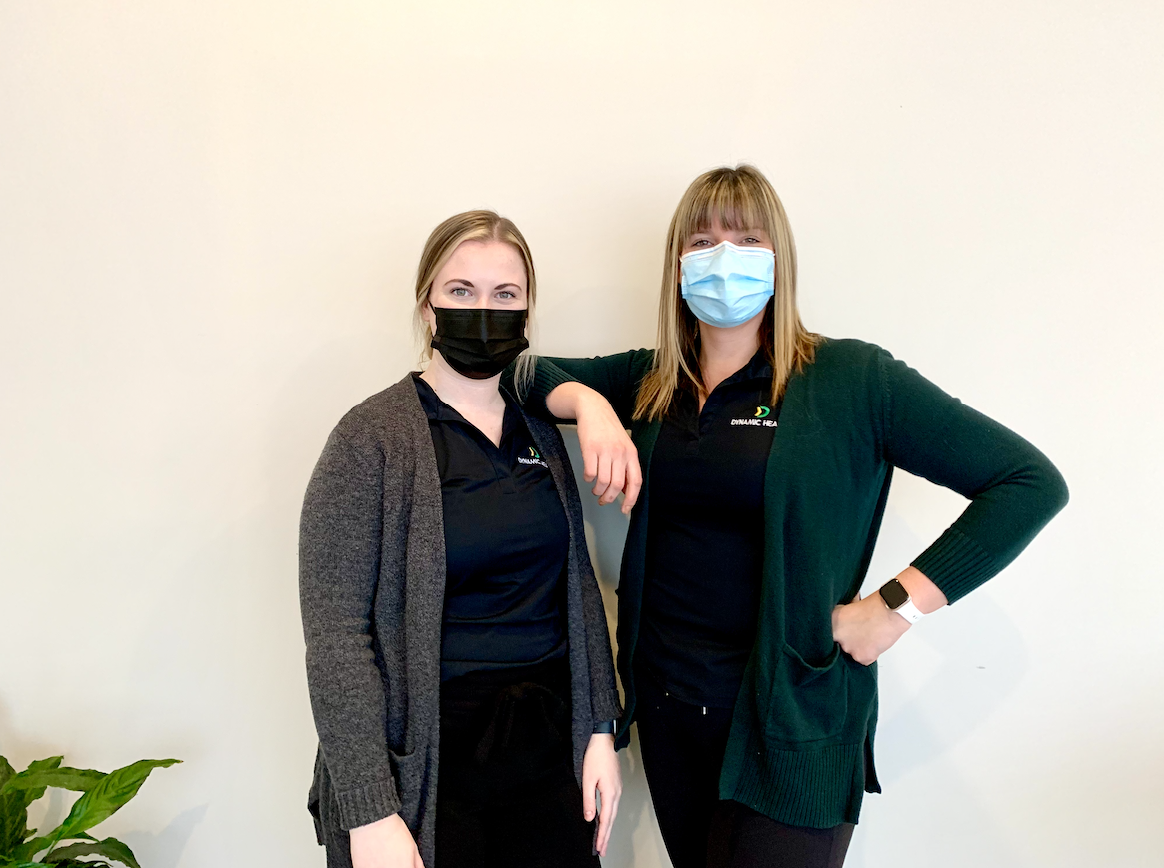There is NO time like the present!
If you are anything like us these last 2 years we have been binge-watching Netflix series and making charcuterie boards for supper!
But we need to be reminded that movement, exercise, and mobility are what help keep our bodies from getting sore and injured.
Already feeling the stress of 2 years in a pandemic? Don’t worry, it’s never too late to get started on your physiotherapy journey to feeling healthier, moving better, and getting back to doing the things you love!
Rebecca and Katrina- Physiotherapists
Avoid or prolong the need for surgery -
Especially with COVID19 and the current hospital situation the health of our muscles and joints has never been more important. No one WANTS surgery, but if the need for surgery is in your future, completing physiotherapy prior to undergoing surgery can help the post-surgery recovery/outcomes.
Learning self-management strategies -
Chronic conditions or chronic pain can be managed. The education component of physiotherapy is very important, the more knowledge we have about our injuries/bodies the more empowered we are throughout our recovery/rehabilitation. Education also helps improve confidence when it comes to returning to activities.
Improve strength and mobility through exercise-
During the winter months, we tend to become less active due to the weather limiting our options for physical activities. Physiotherapy can help establish a safe and effective exercise program that can keep you moving and strong throughout the winter months. You can even do a lot of your stretches while you binge the office for the 10th time!
Fall-related injuries –
Physiotherapy can also help if you are experiencing dizziness (such as vertigo) that is affecting your balance or coordination. Winter is a slippery season so improving your balance and coordination can help you prevent a fall.
Pain management-
Many of us have been conditioned to push through the pain! We are here to tell you DO NOT PUSH THROUGH THE PAIN! There are many ways that we can help relieve pain or give you suggestions on positions or activity modifications that may help your pain. Often times Massage Therapy is a great way to help manage pain. We even have a Registered Massage Therapist on staff that might be able to help!
Injury prevention-
Prevention is Key! If we work to prevent an injury first there may no longer be a need for more drastic measures like surgery. Physiotherapy can help to improve your strength, mobility, coordination, and balance to prevent the injury from occurring in the first place. In an ideal world, everyone would visit their physiotherapist for a yearly checkup just like we would with our family physicians.
Recovery from COVID19 –
It has been shown Covid patients may have problems for many weeks or months following recovery. Physiotherapy can help improve your heart and lung health and get you back to feeling more like yourself through education and exercise.
Improves independence –
We all want to have our independence. When that is taken away from us it can feel like a HUGE loss. Physiotherapy can help improve overall strength/mobility to incontinence issues. We can provide a wide variety of services/treatments to help you regain independence in many aspects of life.
Improve pre and postnatal outcomes/recovery -
We can help establish safe and effective exercise programs to help improve pain and mobility before birth and to help facilitate a safe return to activity after birth (for both vaginal and cesarean deliveries).
It all comes down to 1 thing. Physiotherapy is an important part of our daily lives! You need to make sure to take time to invest in our health and wellness so that you can continue to do the things you love and stay happy and healthy!
Rebecca and Katrina - Physiotherapists










